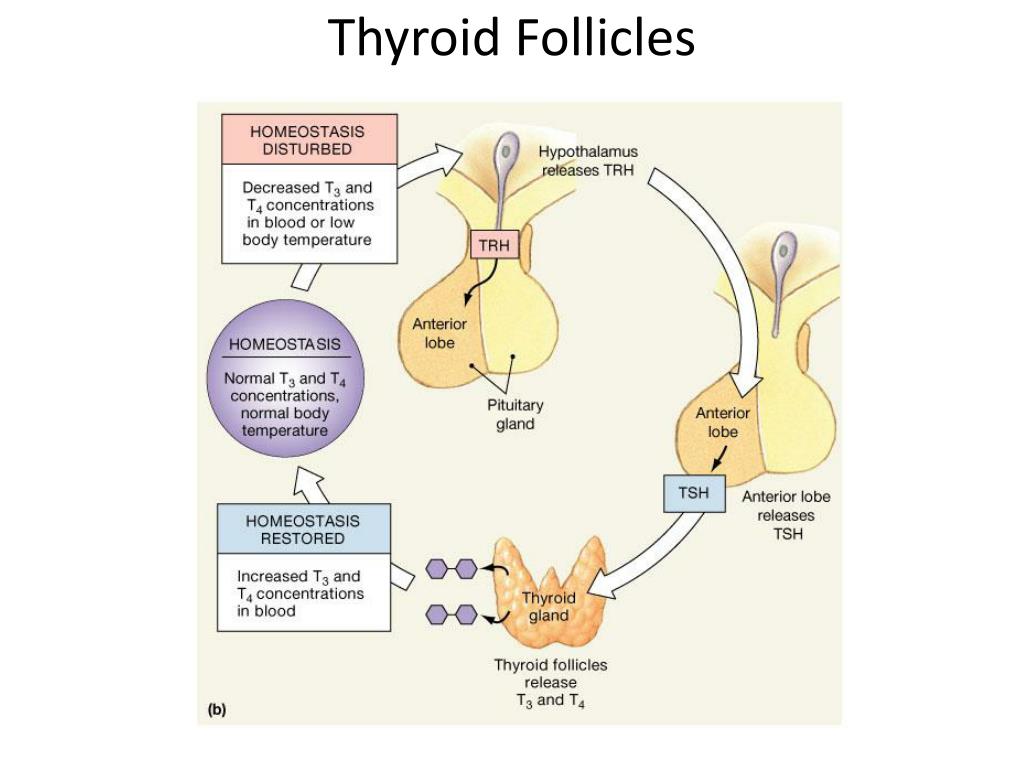Thyroid and temperature. Thyroid Hormone’s Impact on Body Temperature Regulation: New Insights Revealed
How does thyroid hormone affect blood vessels and body temperature. What are the implications for people with thyroid disorders. How can this research lead to improved treatments for temperature sensitivity.
The Thyroid-Temperature Connection: Unveiling New Mechanisms
Recent research has shed light on the intricate relationship between thyroid hormone and body temperature regulation. Scientists at the Karolinska Institutet in Sweden have made a groundbreaking discovery that challenges previous assumptions about how thyroid disorders affect temperature sensitivity.
For years, the medical community attributed temperature-related symptoms in thyroid patients primarily to changes in cellular metabolism. However, this new study reveals a more complex picture, highlighting the crucial role of thyroid hormone in blood vessel function and heat dissipation.
Thyroid Disorders and Temperature Sensitivity: A Closer Look
Why do people with thyroid disorders often experience temperature-related discomfort? The answer lies in the delicate balance of thyroid hormone levels:

- Hyperthyroidism (overactive thyroid): Patients often feel excessively warm
- Hypothyroidism (underactive thyroid): Patients frequently experience cold intolerance
While these symptoms were previously attributed solely to metabolic changes, the new research suggests that blood vessel regulation plays a significant role in this phenomenon.
The Study: Unraveling the Thyroid-Vascular Connection
How did researchers investigate this complex relationship? The study, published in the Proceedings of the National Academy of Sciences, focused on mice with a specific mutation affecting the thyroid hormone receptor TRalpha 1. This receptor is expressed in various tissues, including the central nervous system, bone, and muscle.
Dr. Amy Warner, a researcher at the Karolinska Institutet, explained the significance of this approach: “This makes it easier to study certain aspects of thyroid dysfunction, while others remain normal.” The team’s findings revealed surprising insights into the role of thyroid hormone in vascular control and temperature regulation.
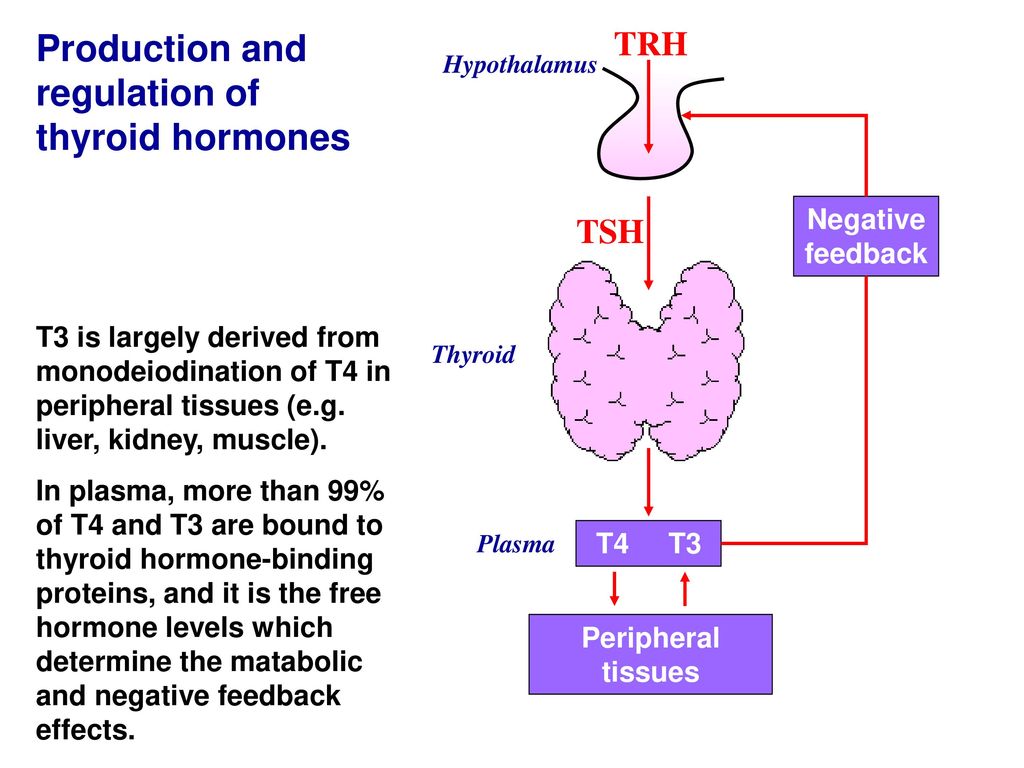
Key Observations and Findings
- Infrared imaging showed significant heat loss through the tails of mutated mice
- The mutation impaired the mice’s ability to properly constrict blood vessels
- Mutated mice exhibited increased metabolism and brown fat activation to compensate for heat loss
- Artificially inducing vascular constriction reversed these effects
Thyroid Hormone and Vascular Control: A Paradigm Shift
How does this research change our understanding of thyroid-related temperature sensitivity? Dr. Warner emphasized that while basal metabolic rate effects are still important, “this study shows that thyroid hormone’s role in the vascular control of body temperature may be of particular importance.”
This revelation opens up new avenues for understanding and potentially treating temperature-related symptoms in thyroid patients. By recognizing the vascular component, healthcare providers may be able to offer more targeted and effective interventions.
Implications for Thyroid Patient Care
What does this mean for individuals living with thyroid disorders? The findings could have significant implications for improving quality of life:

- Potential development of new treatments targeting vascular regulation
- Improved understanding of temperature sensitivity symptoms
- More comprehensive approach to thyroid patient care
Dr. Warner noted that these insights could be particularly beneficial for patients who find their temperature sensitivity significantly impacts their daily lives.
Future Research Directions
Where do researchers go from here? The team at Karolinska Institutet has outlined several exciting avenues for future investigation:
- Determining the exact mechanism behind impaired smooth muscle response in temperature regulation
- Extending infrared thermography studies to human subjects
- Comparing heat dissipation patterns between euthyroid individuals and those with various thyroid conditions
These future studies could further refine our understanding of thyroid hormone’s role in temperature regulation and potentially lead to innovative therapeutic approaches.
The Brown Fat Connection: An Unexpected Player
How does brown fat fit into this thyroid-temperature puzzle? The study revealed an intriguing relationship between thyroid hormone, vascular function, and brown fat activation.
/could-you-be-overmedicated-on-thyroid-drugs-3233271_final-5b4371f746e0fb0037d7c9d1.png)
In the mutated mice, impaired blood vessel constriction led to excessive heat loss. To compensate, their bodies activated brown fat, a specialized tissue that generates heat. This activation resulted in increased metabolism and energy expenditure, despite the mice being in a hypothyroid state.
The Paradox Explained
Why did hypothyroid mice show increased metabolism? Dr. Warner clarified this apparent contradiction:
“When our supposedly hypothyroid mice showed an increase in metabolism and were burning energy through activating their brown fat, we were confused by this paradox and wanted to find out why this occurred.”
The answer lay in the body’s compensatory mechanisms. Unable to retain heat efficiently due to vascular dysfunction, the mice resorted to brown fat activation as a backup heating system. This process, while effective in maintaining body temperature, comes at the cost of increased energy demand.
Vascular Constriction: A Potential Treatment Target
Could artificially inducing vascular constriction help manage temperature sensitivity in thyroid patients? The researchers explored this possibility by administering midodrine, a drug that causes blood vessel constriction, to the mutated mice.

The results were promising:
- Heat loss from the tail was reversed
- Normal body temperature was maintained
- Brown fat activation was “turned off”
- Oxygen consumption and food intake normalized
These findings suggest that targeting vascular function could be a viable approach to managing temperature-related symptoms in thyroid disorders. However, further research is needed to determine if similar interventions would be effective and safe in human patients.
The Broader Impact on Endocrinology and Vascular Biology
How might this research influence other areas of medical science? The study’s findings have implications that extend beyond thyroid disorders, potentially impacting our understanding of:
- Hormone-vascular interactions
- Thermoregulation mechanisms
- Metabolic disorders
- Cardiovascular health
By illuminating the complex interplay between endocrine function and vascular biology, this research opens up new avenues for investigation in multiple medical disciplines.
Potential Applications in Other Fields
The insights gained from this study could have far-reaching implications:

- Climate adaptation research: Understanding how hormones influence temperature regulation could inform strategies for helping populations adapt to changing climates.
- Sports medicine: Insights into thermoregulation could benefit athletes training in extreme conditions.
- Occupational health: Improved understanding of temperature sensitivity could lead to better protective measures for workers in hot or cold environments.
- Space exploration: Knowledge of hormone-temperature interactions could inform health protocols for astronauts experiencing altered gravity and environmental conditions.
Challenges and Limitations: From Mouse Models to Human Applications
While the study provides valuable insights, it’s important to acknowledge the limitations of translating findings from mouse models to human patients. What challenges lie ahead in applying this research to clinical practice?
- Physiological differences between mice and humans
- Complexity of the human endocrine system
- Variability in thyroid disorders among individuals
- Potential side effects of interventions targeting vascular function
Addressing these challenges will require careful, systematic research and clinical trials to ensure the safety and efficacy of any new treatments developed based on these findings.
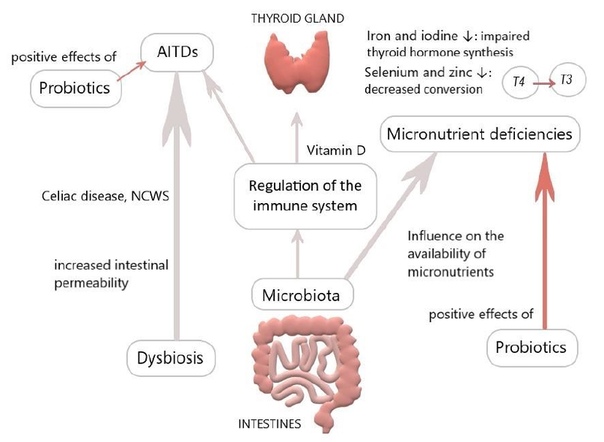
The Patient Perspective: Improving Quality of Life
For individuals living with thyroid disorders, temperature sensitivity can significantly impact daily life. How might this research translate into tangible benefits for patients?
Potential improvements could include:
- More targeted treatments for temperature-related symptoms
- Better management of discomfort in various environmental conditions
- Increased understanding and validation of patients’ experiences
- Development of personalized approaches to thyroid care
By addressing the vascular component of temperature regulation, healthcare providers may be able to offer more comprehensive and effective support to thyroid patients struggling with heat or cold sensitivity.
The Importance of Patient Education
As our understanding of thyroid function evolves, patient education becomes increasingly crucial. Empowering individuals with knowledge about the complex relationship between thyroid hormone, vascular function, and temperature regulation can lead to:
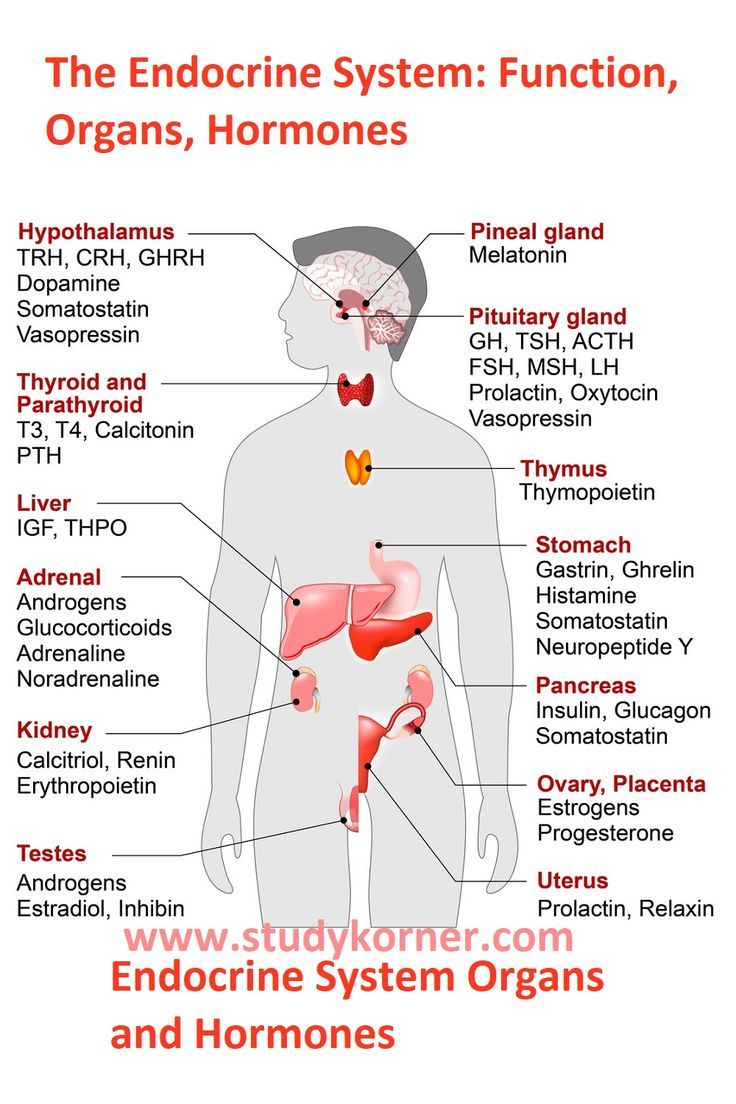
- Improved self-management of symptoms
- More informed discussions with healthcare providers
- Increased adherence to treatment plans
- Better overall quality of life
Integrating New Insights into Clinical Practice
How can healthcare providers incorporate these findings into their approach to thyroid care? While more research is needed before specific treatment recommendations can be made, this study highlights the importance of considering vascular function when managing thyroid disorders.
Potential changes in clinical practice could include:
- More comprehensive assessment of temperature-related symptoms
- Consideration of vascular function in treatment planning
- Exploration of combination therapies targeting both metabolic and vascular aspects of thyroid disorders
- Increased use of imaging technologies to assess heat dissipation patterns
As research in this area progresses, it will be crucial for medical professionals to stay informed and adapt their approaches accordingly.

The Road Ahead: Continuing the Journey of Discovery
What does the future hold for thyroid research and patient care? This groundbreaking study has opened up exciting new avenues for investigation and potential treatment development. As scientists delve deeper into the intricate relationship between thyroid hormone, vascular function, and temperature regulation, we can anticipate:
- More targeted and effective treatments for thyroid-related temperature sensitivity
- Improved diagnostic tools for assessing vascular function in thyroid patients
- Better understanding of the broader implications of thyroid hormone on overall health
- Potential breakthroughs in related fields such as metabolic disorders and cardiovascular health
The journey of scientific discovery continues, promising hope for improved quality of life for millions of individuals affected by thyroid disorders worldwide.
How body temperature is affected by thyroid hormone
Researchers say they have discovered how thyroid hormone affects blood vessels to determine body temperature, potentially explaining why people who have disorders of the thyroid gland have higher sensitivity to environmental temperature.
An overactive thyroid (hyperthyroidism) can cause a person to feel too hot, while an underactive thyroid (hypothyroidism) can cause a person to feel too cold.
The researchers from the Karolinska Institutet in Sweden said that previous studies have attributed this to how thyroid hormone affects the metabolism within cells.
The thyroid produces hormones that are able to influence how much the blood vessels dilate. In turn, this affects how much heat can escape the body.
For the study, published in the Proceedings of the National Academy of Sciences, the researchers studied mice with a mutated thyroid hormone receptor (receptor-mediated hypothyroidism). This particular mutation only affects one type of hormone receptor called TRalpha 1.
This particular mutation only affects one type of hormone receptor called TRalpha 1.
According to the researchers, TRalpha 1 is only expressed in certain tissues, and the mutation makes the tissue unresponsive to thyroid hormone, particularly in the central nervous system, bone and all muscle types.
Dr. Amy Warner, researcher at the Department of Cell and Molecular Biology at the Karolinska Institutet, told Medical News Today:
“This makes it easier to study certain aspects of thyroid dysfunction, while others remain normal. It’s well known that thyroid hormone drives up basal metabolic rate, by affecting how quickly cells metabolize, and hypothyroidism should therefore show the opposite.”
Previous studies have shown that mice with this defect had an overactive metabolism, caused by the energy needed to generate heat from brown fat.
“When our supposedly hypothyroid mice showed an increase in metabolism and were burning energy through activating their brown fat, we were confused by this paradox and wanted to find out why this occurred,” Dr.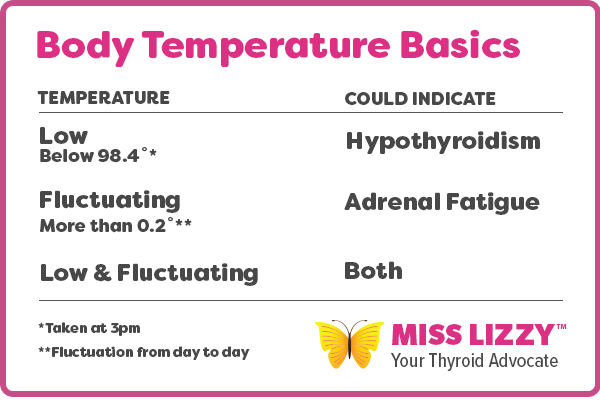 Warner added.
Warner added.
The researchers took infrared images of the mice, which revealed that they were losing a significant amount of heat through their tails. This showed that the mutated thyroid hormone receptor meant the mice were unable to sufficiently regulate the constriction of their blood vessels.
Dr. Warner explained the findings to Medical News Today:
“Mice with a non-functioning TRalpha 1 receptor cannot properly regulate their body temperature, and this is due to impaired control of their blood vessels, in areas where they are used for temperature regulation, such as the tail.”
She continued:
“Shown through infrared imaging, at room temperature, the tail blood vessels do not constrict properly, and too much heat is lost. The mice cannot defend their body temperature correctly, and therefore need to generate heat from their brown fat to keep warm. Activation of brown fat requires an increase in energy demands to maintain, hence why these mice have a higher metabolism, despite being hypothyroid. ”
”
When the researchers gave the mice a drug (midodrine) to artificially cause vascular constriction, they found that this reversed the heat loss from the tail, meaning the mice could maintain normal body temperature, and activation of the brown fat was “turned off.”
“Oxygen consumption and food intake were also normalized, meaning that the increased metabolism in these mice was due to the energy demands of the brown fat, not a consequence of the mutation itself,” Dr. Warner added.
“By looking at the function of isolated smooth muscle from tail artery, we know that (sympathetic) signal from the brain to the tail is intact in these mice, and the defect is within the smooth muscle itself.”
Dr. Warner said that until now, temperature sensitivity as a result of thyroid disorders has been attributed solely to the basal metabolic rate effects of too much or too little thyroid hormone.
“However, this study shows that thyroid hormone’s role in the vascular control of body temperature may be of particular importance,” she added.
Dr. Warner noted that the findings of this study may open up the possibility to treat thyroid patients who find their temperature sensitivity to be significantly detrimental to their quality of life.
“Similarly, having a better understanding of all the conceivable consequences of thyroid hormone disorders is important for comprehensive patient care.”
Dr. Warner said that the team would like to carry out further research in order to determine exactly why the smooth muscle does not respond correctly in the mice to regulate their body temperature.
She added: “We’d also like to see the use of infrared thermography extended to humans, to see if any heat dissipation differences can be seen between euthyroid and different thyroid conditions.”
Hypothyroidism | Johns Hopkins Medicine
What is hypothyroidism?
Hypothyroidism is the most common type of thyroid disorder. It means your thyroid gland is not active enough. This tiny gland is found in the front of your neck.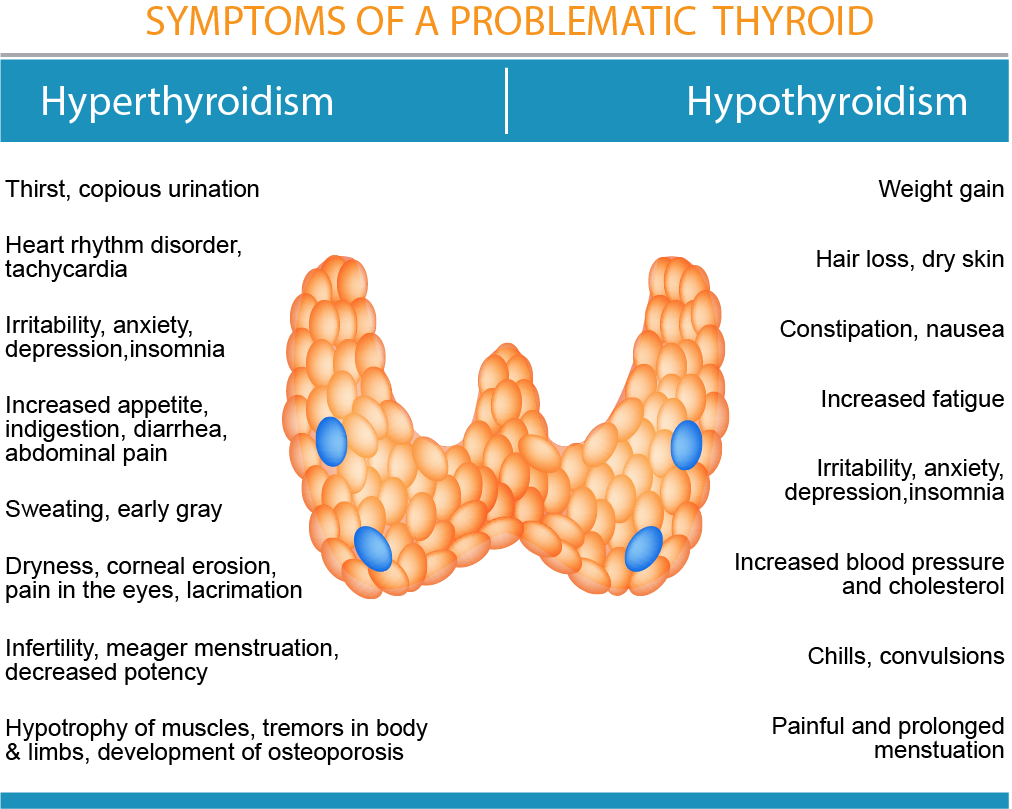 Its job is to make thyroid hormone. If the gland is underactive, it may not make enough thyroid hormone.
Its job is to make thyroid hormone. If the gland is underactive, it may not make enough thyroid hormone.
Thyroid hormones control how your body uses energy. They affect almost every organ in your body. When your thyroid doesn’t make enough of these hormones, parts of your body slow down.
What causes hypothyroidism?
The most common cause of hypothyroidism is an autoimmune disorder. This means your immune system starts to attack itself. It makes antibodies against the thyroid gland. Another cause may be treatment for an overactive thyroid gland. That may include radioactive iodine therapy or surgery.
A condition called secondary hypothyroidism can also sometimes happen. It’s when your pituitary gland stops working. The pituitary gland then no longer tells the thyroid gland to make thyroid hormones.
Newborns are tested at birth for hypothyroidism. This condition must be treated immediately. It can affect a baby’s brain and nervous system.
Who is at risk for hypothyroidism?
You may be more likely to have hypothyroidism if you:
- Are a woman
- Are older than age 60
- Have had thyroid problems or thyroid surgery in the past
- Have a family history of thyroid problems
- Have certain conditions, such as type 1 diabetes or rheumatoid arthritis
- Have Turner syndrome, a genetic condition that affects women
- Are pregnant or have had a baby within the past 6 months
- Have an iodine deficiency.
 Your body needs iodine to make thyroid hormone.
Your body needs iodine to make thyroid hormone.
What are the symptoms of hypothyroidism?
Symptoms are different for each person. They are usually hard to notice and start slowly. They may be mistaken for symptoms of depression. Here are the most common symptoms and signs:
- Dull facial expressions
- Tiredness (fatigue)
- Being cold bothers you
- Hoarse voice
- Slow speech
- Droopy eyelids
- Puffy and swollen face
- Weight gain
- Constipation
- Sparse, coarse, and dry hair
- Coarse, dry, and thickened skin
- Hand tingling or pain (carpal tunnel syndrome)
- Slow pulse
- Muscle cramps
- Sides of eyebrows thin or fall out
- Confusion
- Increased or irregular menstrual flow in women
These symptoms may look like other health problems. Always see your healthcare provider for a diagnosis.
How is hypothyroidism diagnosed?
Your healthcare provider will ask about your past health. You will also need an exam. Blood tests can also help diagnose hypothyroidism. They can measure the amount of thyroid hormone and thyroid-stimulating hormones in your blood.
You will also need an exam. Blood tests can also help diagnose hypothyroidism. They can measure the amount of thyroid hormone and thyroid-stimulating hormones in your blood.
How is hypothyroidism treated?
Your healthcare provider will figure out the best treatment for you based on:
- Your age, overall health, and past health
- How sick you are
- How well you can handle certain medicines, treatments, or therapies
- How long the condition is expected to last
- Your opinion or preference
The goal of treatment is to return your level of thyroid hormone back to normal. You may need to take medicine that gives you a dose of thyroid hormones. Your provider may need to change the dose over time. You will need blood tests to make sure you are taking the correct dose of thyroid hormone replacement. You will probably need to take this medicine for the rest of your life.
What are the complications of hypothyroidism?
If your hypothyroidism is not treated, these complications may happen:
- Anemia
- Low body temperature
- Heart failure
When should I call my healthcare provider?
Tell your healthcare provider if your symptoms get worse or you have new symptoms. If you are a woman of childbearing age and want to become pregnant, talk with your healthcare provider first.
If you are a woman of childbearing age and want to become pregnant, talk with your healthcare provider first.
Key points about hypothyroidism
- Hypothyroidism means your thyroid gland is underactive. It isn’t making enough thyroid hormone. The most common cause is when your immune system starts to attack itself. It makes antibodies against the thyroid gland.
- Symptoms include dull facial expressions, tiredness, and weight gain.
- Blood tests can help diagnose this condition. They can measure the amount of thyroid hormone and thyroid-stimulating hormones in your blood.
- The goal of treatment is to return your levels of thyroid hormone back to normal.
- Untreated hypothyroidism may lead to anemia, low body temperature, and heart failure.
- Treatment may include medicine that replaces lost thyroid hormones. You usually will need to take thyroid hormones for the rest of your life.
Next steps
Tips to help you get the most from a visit to your healthcare provider:
- Know the reason for your visit and what you want to happen.

- Before your visit, write down questions you want answered.
- Bring someone with you to help you ask questions and remember what your provider tells you.
- At the visit, write down the name of a new diagnosis, and any new medicines, treatments, or tests. Also write down any new instructions your provider gives you.
- Know why a new medicine or treatment is prescribed, and how it will help you. Also know what the side effects are.
- Ask if your condition can be treated in other ways.
- Know why a test or procedure is recommended and what the results could mean.
- Know what to expect if you do not take the medicine or have the test or procedure.
- If you have a follow-up appointment, write down the date, time, and purpose for that visit.
Thyroid
Every fourth inhabitant of Moscow and the Moscow region is a potential patient of an endocrinologist. We live in an area with a low iodine content, which means that our “thyroid gland” has to work hard. From such work, it increases in size and, sometimes, very significantly. Its normal hormonal function may be disrupted. And to prevent this from happening, you just need to see a doctor on time.
From such work, it increases in size and, sometimes, very significantly. Its normal hormonal function may be disrupted. And to prevent this from happening, you just need to see a doctor on time.
Who knows their norm?!
Usually, nothing should be felt on the front of the neck. And if the thyroid gland is felt with your fingers, it is very likely that it is enlarged (unless, of course, what you felt is exactly the thyroid gland!)
The normal function of the thyroid gland is not felt in any way, but its violation can cause chronic fatigue, fatigue, even muscle weakness, if such a violation has gone far.
Whom to fear?
Symptoms of the “thyroid gland” disease can be not only weakness and lethargy, and sometimes even vice versa – excitability and irritability, seemingly unconditioned; or a temperature of 37.0-37.5 without obvious other reasons. There may be nothing else besides an increase in temperature, and doctors tend to attribute such a temperature to endless acute respiratory infections (without cough and runny nose?!), “temperature tails” after infections, or even to the personality and structure of the patient’s nervous system./what-you-need-to-know-about-thyroid-storm-3232981_final-f6b75fd80c824233bced2cd5972526ce.jpg)
See the enemy in the face
There are no “100%” symptoms. But everyone needs to remember at least that the thyroid gland is. That she might be sick. That there are more than a hundred diseases of the thyroid gland, but the lion’s share is caused by a lack of iodine in food. Insufficient function of the thyroid gland (hypothyroidism) is the cause of miscarriage, hypothyroidism is the cause of mental underdevelopment of children, poor school performance. (Of course, there are other reasons as well). But it should be remembered that memory and intelligence are directly dependent on the function of the thyroid gland.
Women and children
That’s who is most important not to miss the disease. The function of the fetal brain depends on the state of the mother’s thyroid gland! Abilities and rates of development of the child too.
Poison?
Individuals suffering from atherosclerosis, hypertension and cardiac arrhythmias certainly need to be monitored. In the first two cases, because these diseases can arise or be aggravated by the pathology of the “thyroid”, and in the third, also because some antiarrhythmic drugs, say, cordarone, can harm the gland (especially with inadequate laboratory control of its work).
In the first two cases, because these diseases can arise or be aggravated by the pathology of the “thyroid”, and in the third, also because some antiarrhythmic drugs, say, cordarone, can harm the gland (especially with inadequate laboratory control of its work).
Until you get sick
Go to the doctor. And if there is no time yet, then do at least an ultrasound scan and take an analysis for hormones (TSH) and antibodies to thyroglobulin. These indicators will exclude the pathology of the thyroid gland (if everything is normal, of course). And if something is not right, then be sure to see a doctor. It is possible that other studies will be required to clarify the diagnosis. Such examinations are quite justified for healthy individuals, because thyroid diseases can be asymptomatic for many years, without manifesting themselves in any way, and not bother a person at all. And identifying problems at an early stage is very important, because this will avoid so many complications!
If you want to be healthy…
Of course, autoimmune inflammation of the thyroid gland, or its cancer, cannot be cured with iodine, but the most common disease – endemic goiter – is quite possible. You can also prevent it from happening. Taking potassium iodide at a dose of 100 micrograms per day for 3 to 6 months can radically improve the situation. Moscow and the Moscow region are zones of endemic goiter, 96% of the population have signs of iodine deficiency, which means that we are all recommended to eat iodized salt, and recently it has become possible to eat iodized bread and iodized butter. These products are both tasty and healthy.
You can also prevent it from happening. Taking potassium iodide at a dose of 100 micrograms per day for 3 to 6 months can radically improve the situation. Moscow and the Moscow region are zones of endemic goiter, 96% of the population have signs of iodine deficiency, which means that we are all recommended to eat iodized salt, and recently it has become possible to eat iodized bread and iodized butter. These products are both tasty and healthy.
Guys, let’s live together!
A lot of things can happen to the “thyroid gland”, and therefore – the doctor is your best adviser. All medicines (including iodomarin and potassium iodide) are best used for its intended purpose and under its strict guidance. In addition, most thyroid diseases, with adequate treatment, end in recovery! Think about how many diseases we can cure?
An unhealthy thyroid gland disrupts thermoregulation – Gazeta.Ru
If you are cold – check your thyroid gland – Gazeta.Ru
Science
Text size
A
A
A
close
100%
Scientists have found out why people with thyroid disorders are more sensitive to ambient temperature.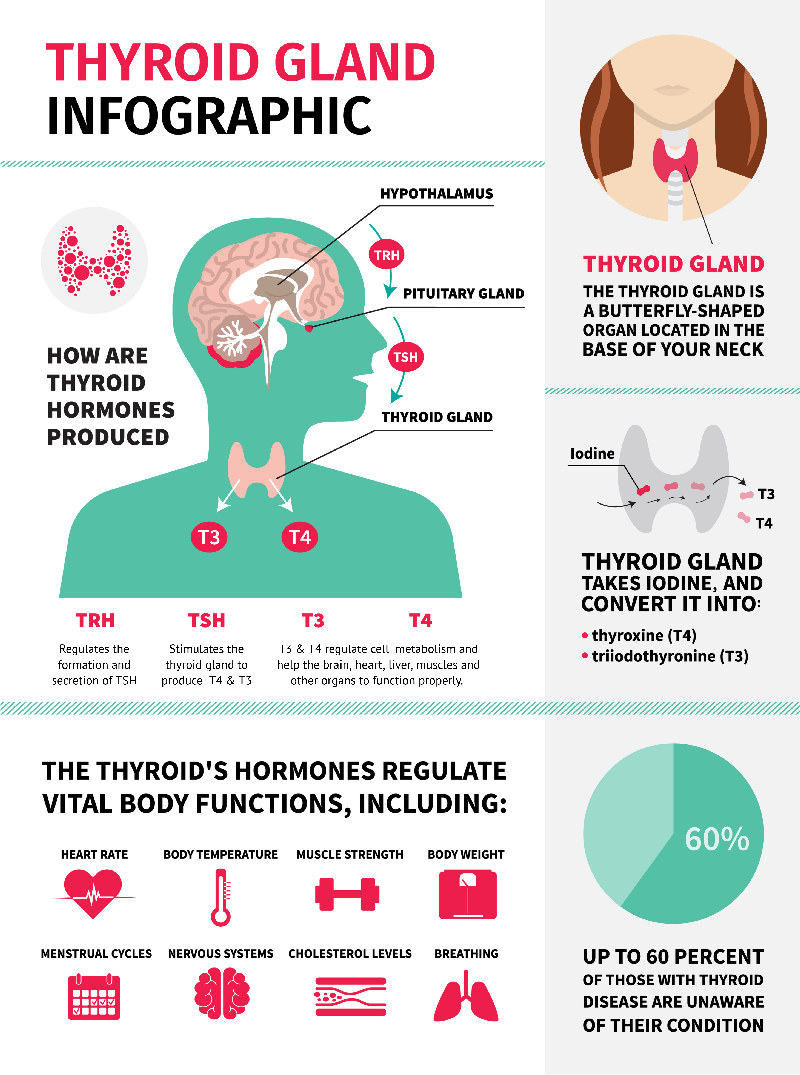
Those who have an overactive or underactive thyroid gland often feel that their body temperature is above or below normal. This phenomenon is well known to physicians, but until now it has been associated exclusively with the influence of thyroid hormones on the intensity of metabolism in cells.
Swedish scientists have found that the main cause of thermoregulation disorders lies not at all in a change in metabolism, but in the effect of thyroid hormones on blood vessels.
Hormones against whites
The use of hormone replacement therapy does increase the risk of breast cancer…
05 September 15:03
Hormones are signal molecules that are produced in the body in small quantities and are carried with the bloodstream to all organs and cells. When they interact with receptors, the signal is greatly amplified and converted into a physiological one. There can be different receptors for the same hormone in different organs. For example, the thyroid hormone receptor TR-α1 is most active in cardiac and skeletal muscle.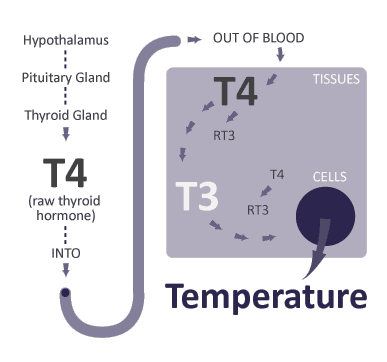
Scientists from the Karolinska Institute in Sweden have obtained a mutant line of laboratory mice in which TR-α1 was “broken”. The mutant rodents generated large amounts of heat as metabolism increased dramatically in a specialized tissue called brown fat. Brown adipose tissue is present in all mammals. It is especially developed in hibernating animals. People also have it: in newborns it is 5% of the total body weight.
The main function of brown fat is to give warmth “from the inside”, to warm.
Headache reduces income
The higher the income level, the less often people suffer from migraines. And the disease itself can lead to structural…
August 29 11:18
So, as Swedish scientists found out, despite the increased metabolic activity of brown adipose tissue, the body temperature of mutant rodents with a broken thyroid hormone receptor did not increase. It turned out that, among other things, when the receptor was broken, blood vessels lost their ability to narrow or expand under the influence of signaling molecules of the nervous system, such as acetylcholine.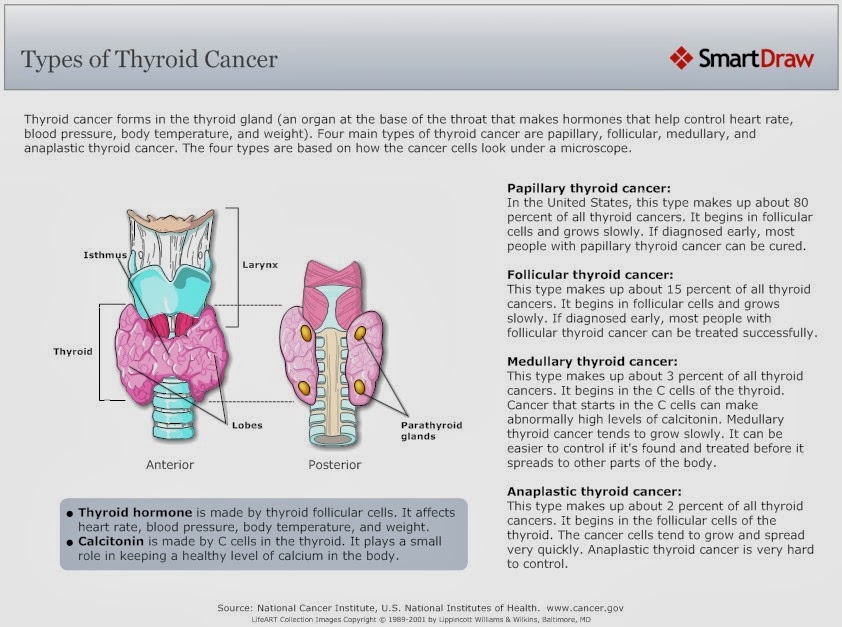
When scientists measured the temperature of various parts of the body of mutant mice using infrared thermography, they noticed that the heat generated by brown fat dissipated through the surface of the body, and was not stored, as is the case with normal functioning of the body, and was not used for internal heating. Especially a lot of heat “leaked” through the tail. By injecting a specially selected vasoconstrictor into the tail artery, it was possible to prevent heat loss and, as a result, normalize the activity of brown adipose tissue.
The findings, according to scientists, explain why patients with thyroid diseases are so sensitive to temperature changes.
Everything hurts because of bacteria
Scientists have revised their view of the source of pain in infectious tissue damage. They discovered that…
August 26 13:15
This is the first study of its kind to discover the molecular mechanisms of thyroid hormone-mediated thermoregulation and show the relationship between processes occurring in adipose tissue and the cardiovascular system.
It also became clear that the unbalanced work of blood vessels nullifies all the body’s efforts aimed at heating. Mice that produce excess heat and are unable to store it get cold. People are in a better position. Unlike rodents, they can wrap themselves in a warm sweater or turn on the air conditioner for heating. Nevertheless, in the long term, these studies should be considered as the first stage in the search for means of correcting vascular dysfunction. Results of work published in the scientific journal PNAS .
Subscribe to Gazeta.Ru in News, Zen and Telegram.
To report a bug, select the text and press Ctrl+Enter
News
Zen
Telegram
Georgy Bovt
A four-day work week in Russia: dreams and reality
Why a four-day work week does not shine for us
Anastasia Mironova
For an abortion: how many women in Russia terminate a pregnancy
We have fewer abortions than in religious Poland, leave behind our women

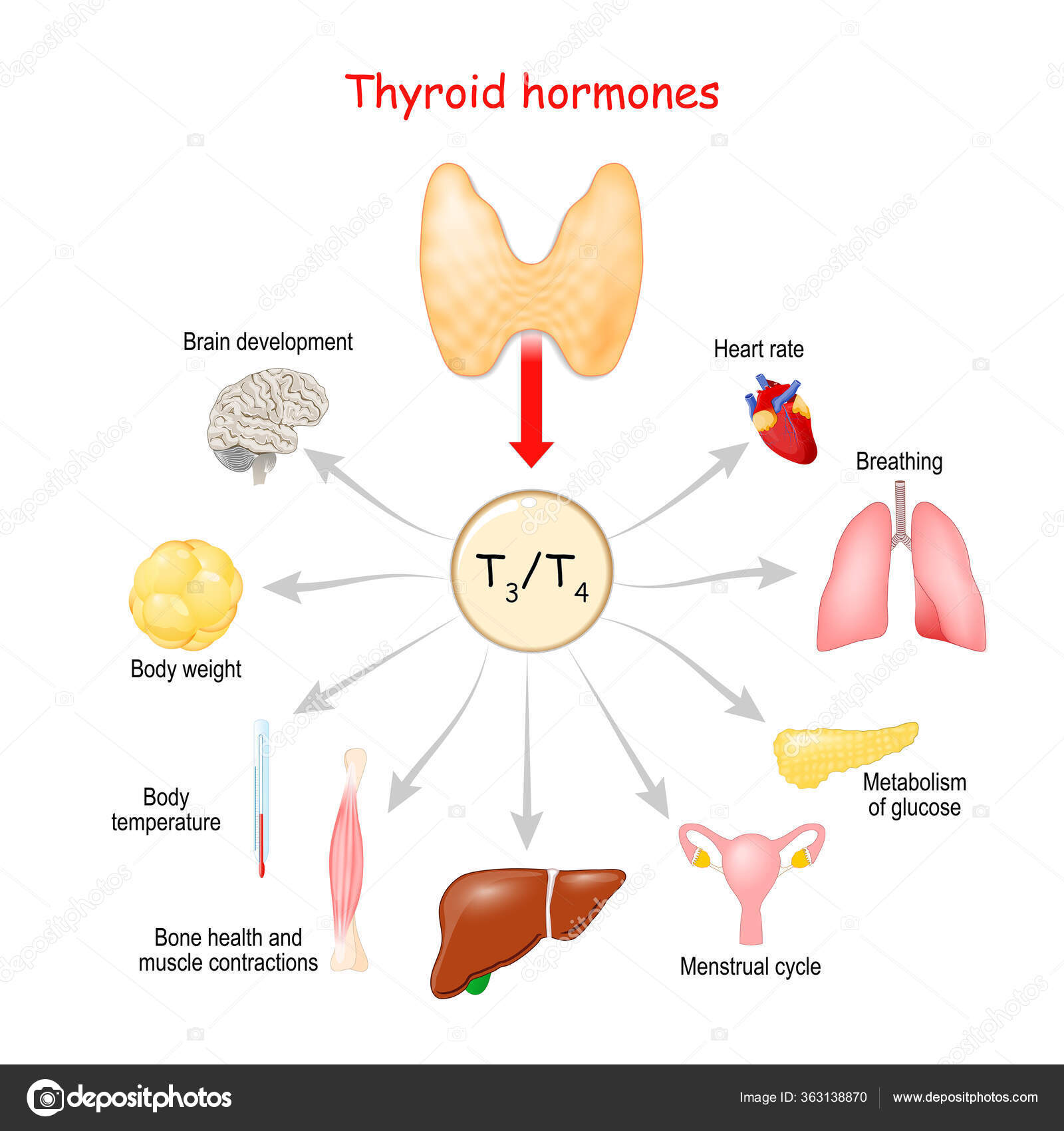 Your body needs iodine to make thyroid hormone.
Your body needs iodine to make thyroid hormone.